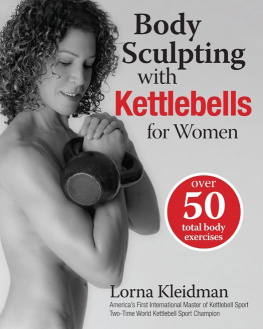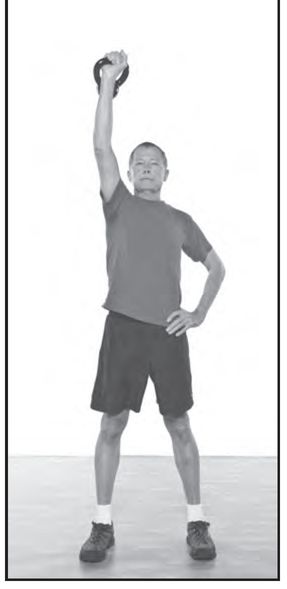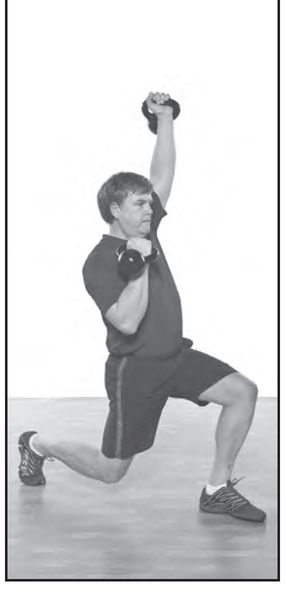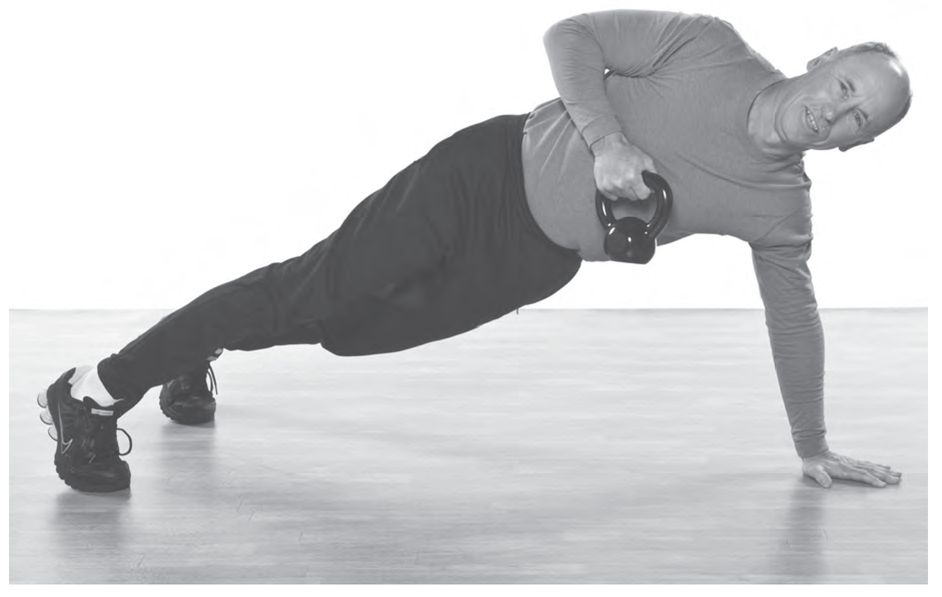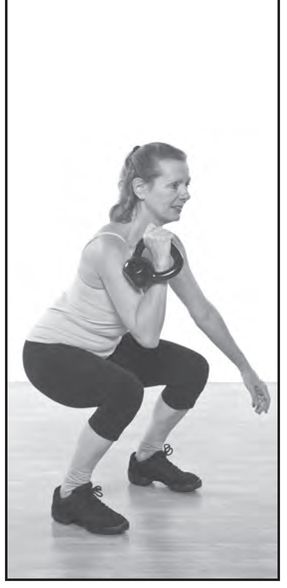Table of Contents
part 1
getting started
introduction
The fountain of youth has been discovered! However, its not in a bottle, an injection or even a pill. Its found in a daily dose of sensible physical activity. While many 50+ people understand the importance of aerobic exercise, many neglect a critical component to successful agingmaintaining strength and power. Specifically, a lack of strength and power in our legs and trunk reduces our ability to attend to basic activities of daily living.
This weakness increases the risk of falling and reduces our independence. Using kettlebells is a great option to build strength and prevent sarcopenia, or age-related atrophy. A basic kettlebell exercise program will engage your legs, trunk and upper body and help you stay fit for life.
Kettlebells for 50+ invites everyone to incorporate kettlebell training into their lives. Although this book is similar to other kettlebell exercise books, its also very different. As an adaptive physical education teacher for more than 35 years, I believe that the person and the purpose of the movement are more important than some prescribed movement pattern. For this reason, many of the exercises selected for this book have been adapted to better suit baby boomers, offering the most benefit and the least amount of insult to the vintage body. Any traditional kettlebell exercise that I felt compromised body mechanics or failed to have a functional purpose was not included. As I always say, Train smart, not hard.
what is old is new again
The kettlebell, or girya in Russian, is a cast-iron weight that looks like a cannonball with a teapot handle (personally, I think the name should be kettleball because of its shape). Its believed to have originated in the eastern European countries in the late 1800s, originally used as a past-time activity and as circus stunts by big burly men displaying feats of strength. As time progressed, people started to use the kettlebell as a method to improve strength and fitness. In the former Soviet Union, Olympic weightlifting coaches used kettlebells as a training device.
The kettlebell arrived in the United States in the early 1900s and was used by immigrants and, along with the medicine ball, was slowly introduced into boxing clubs as a training device. The kettlebell lost favor in the 70s when the fitness industry moved toward selectorized weight machines. It was at this time that Nautilus equipment became the rage and old-time medicine balls, club bells, dumbbells, barbells and kettlebells were replaced with shiny, cambered, belt-driven resistance-training equipment.
Forty years later, old-school training devices have come back into vogue. Today we see boot-camp training programs and shadow boxing put to music. Many personal trainers new to fitness think that push-ups, jumping jacks, squat thrusts and kettlebells are something very innovative but most of us 50+ folks can say, Been there, done that. For some of us, reintroducing kettlebells into our lives may be like visiting an old friend.
Kettlebells are part of the plyometric family, which includes exercises such as jumping, bounding, and throwing and catching weighted objects such as medicine balls or kettlebells. These movements involve rapid eccentric (lengthening) and concentric (shortening) actions. Plyometric exercises have their roots in the 1960s, when they were first used in the Eastern Bloc countries to train their weightlifters and track-and-field athletes. A plyometric workout was, and still is, designed to improve explosive muscular power.
The reason the kettlebell is gaining favor again is that the motions involved in a kettlebell workout mimic activities of daily living much more than the unidirectional exercise machines seen in most gyms today. The kettlebell is used to perform dynamic exercises that foster power, agility, strength, flexibility and even aerobic fitness. The shape of the kettlebell places the center of gravity beyond the handle, which allows the bell to be thrown about easily, facilitating swing movements. Some versions of kettlebells include bags filled with steel shot, sand or adjustable weight plates. When used properly, kettlebells are a challenging and enjoyable adjunct to a standard total-body fitness program.
why use kettlebells?
Anyone who has exercised for any period of time has probably gotten stale, bored or burnt out with the same old routine. Kettlebells arent a be-all and end-all piece of equipment, but they do offer a fabulous diversion and can be used alone in an exercise routine or integrated into an existing strength-training program. They can provide you with a comprehensive total-body workout that addresses strength, power, core stabilization, agility and hand-to-hand coordination as well as hand-eye coordination.
Kettlebells are basically odd-shaped weights with handles. The handle placement in relation to the weighted ball off-balances the load, creating an additional dynamic force when used. With this design, you can move in several planes and develop strength and power in the legs, lower back, grip and shoulders. We need to think of our body as a total kinetic chain unit, which means that what happens at one point affects something else down the chain. Just gripping the bell handle engages the forearm muscles; swinging the bell from the floor to overhead engages the calf muscles, the butt muscles (gluteals), the back muscles and the shoulder muscles (deltoids), as well as many deep-lying muscles. To engage all those same muscles on an exercise machine would require at least three different machines.
Most traditional exercise programs performed with free weights or machines generally focus on one set of muscles at a time. Kettlebell movements often target not only primary muscles but also the supporting muscle groups. Moves that involve momentum (such as swings) incorporate both acceleration and deceleration, but kettlebells can be used in a slow, controlled manner much like free weights. In this regard, when used correctly, the kettlebell is an ideal training device for all levels.
Most beginners need to start at the slow, controlled level and then progress to the more dynamic and advanced moves.
What are the advantages of kettlebells? They:
are reasonably priced and last forever.
are small and easy to store.
are very adaptableyou can move them slowly, quickly and in almost any conceivable direction.
are an efficient way to get a total-body workout in a shorter period of time.
often better replicate functional activities of life and sport than exercise machines because of the incorporation of acceleration and deceleration.



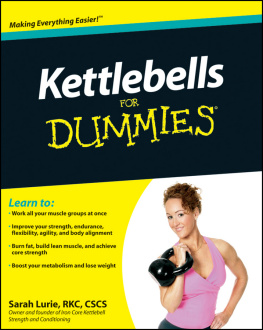
![Cotter - Kettlebell training: [95 exercises for strength, toning, stamina, and weight loss]](/uploads/posts/book/196732/thumbs/cotter-kettlebell-training-95-exercises-for.jpg)
